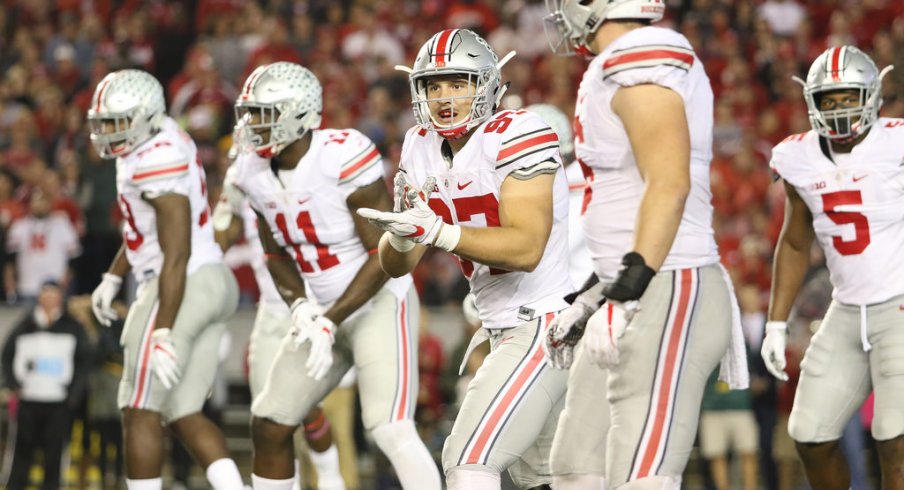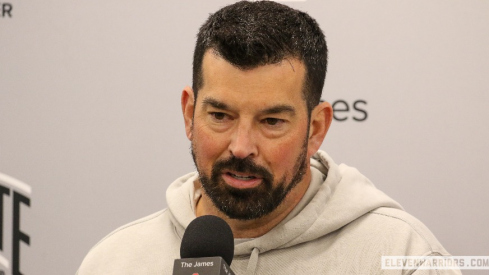For two out of the first three seasons Urban Meyer was the head coach at Ohio State, the Buckeye defensive front wreaked havoc on opposing offensive lines.
In 2013 and 2014, the Ohio State defensive front led the Big Ten in sacks, collecting 87 combined in that span. In 2015, the Buckeyes finished second in the conference, tallying 38 sacks.
In 2016, however, Ohio State tied for seventh in the Big Ten in sacks with just 28. With a deep defensive line, it did not appear talent was an issue, so why did the numbers drop? According to Nick Bosa, it was the style of play former co-defensive coordinator and linebackers coach Luke Fickell enforced on the defensive side of the ball.
"The scheme Coach Fickell (had), we set up plays for the linebackers to make," Bosa said Monday. "Now, it's us pinning our ears back instead of sitting at the line and waiting."
Simply put, the Buckeye linemen were being instructed to take up blocks, so that the Ohio State linebackers could make tackles closer to the line of scrimmage. That style of play didn't exactly appeal to Bosa.
"It was definitely frustrating just being tight on the (offensive) tackle," Bosa said. "On first and second down, it was tough to get a pass rush because you were too tight, anticipating the run."
With Fickell gone and Ohio State breaking Chris Worley into a new role at middle linebacker, a veteran defensive line is now getting permission to – as Bosa said – pin its ears back and rush the quarterback.
The new style isn't foreign to defensive line coach Larry Johnson, who said Monday that he has coached both systems in the past.
"It's just two different styles of defense. Greg Schiano comes in and has a different philosophy," Johnson said. "Last year, we were more of a squeeze front, where you build a wall. This year we are playing a little wider, which will allow us to get off the ball and play a little faster."
The freedom for the defensive line to get after the quarterback is not only on third down, however, as senior defensive end Jalyn Holmes said the Buckeyes are free to go full steam ahead on early downs as well.
"You enjoy it more, because you get to rush the quarterback on first and second down," Holmes said. "There is more freedom in the pass game on earlier downs."
The goal of any pass rush is to get to the quarterback but also to disrupt the timing of of an offense. While the numbers were lacking in the sack column for Ohio State in 2016, the Buckeyes still got enough pressure to hurry throws, which contributed to the defense collecting 21 interceptions.
Johnson said the added focus on rushing the passer is to further add to that disruption, something that could benefit an Ohio State secondary breaking in three new starters.
"The key is, can we take them out of their dimension? Can we take away something they do well? If you get behind in a game, you can't run the ball," he said.
While it remains to be seen if the Buckeyes will have success with the aggressive approach, Johnson said Ohio State's defensive front is enjoying the new style of defense, at the very least.
"It is fun for the kids," Johnson said. "I have been in both systems and have been successful, but I think for the players, the system fits what we have talent-wise."


